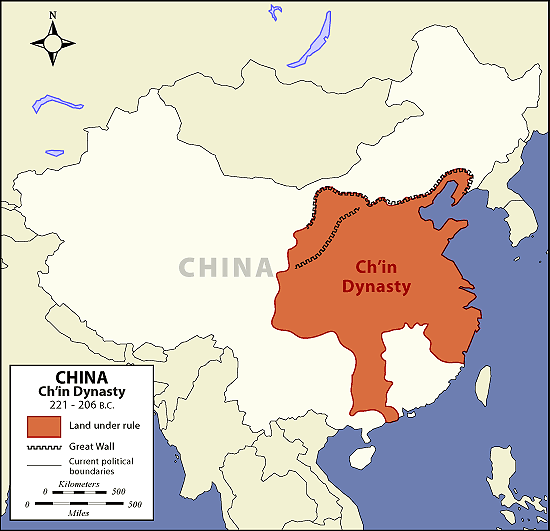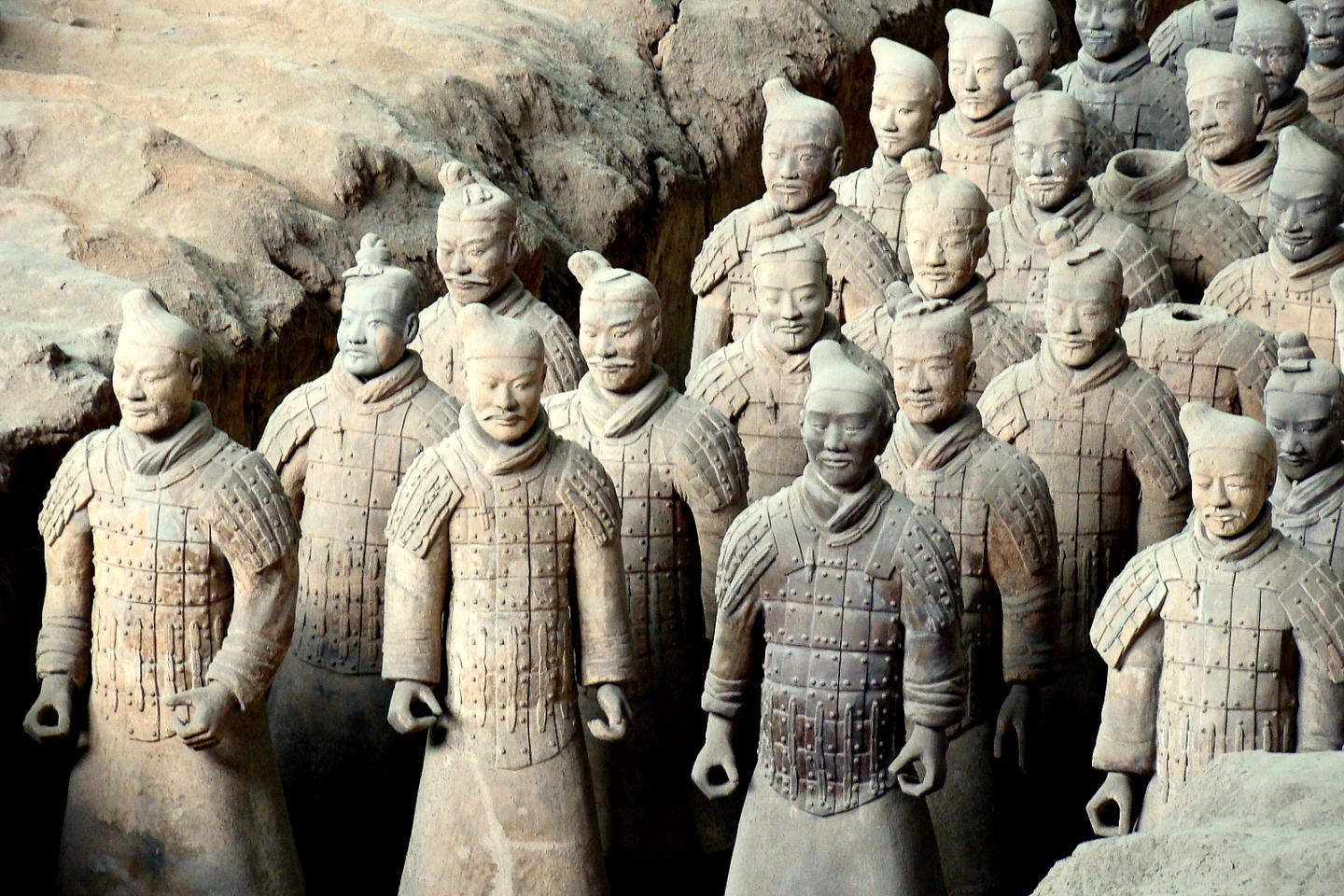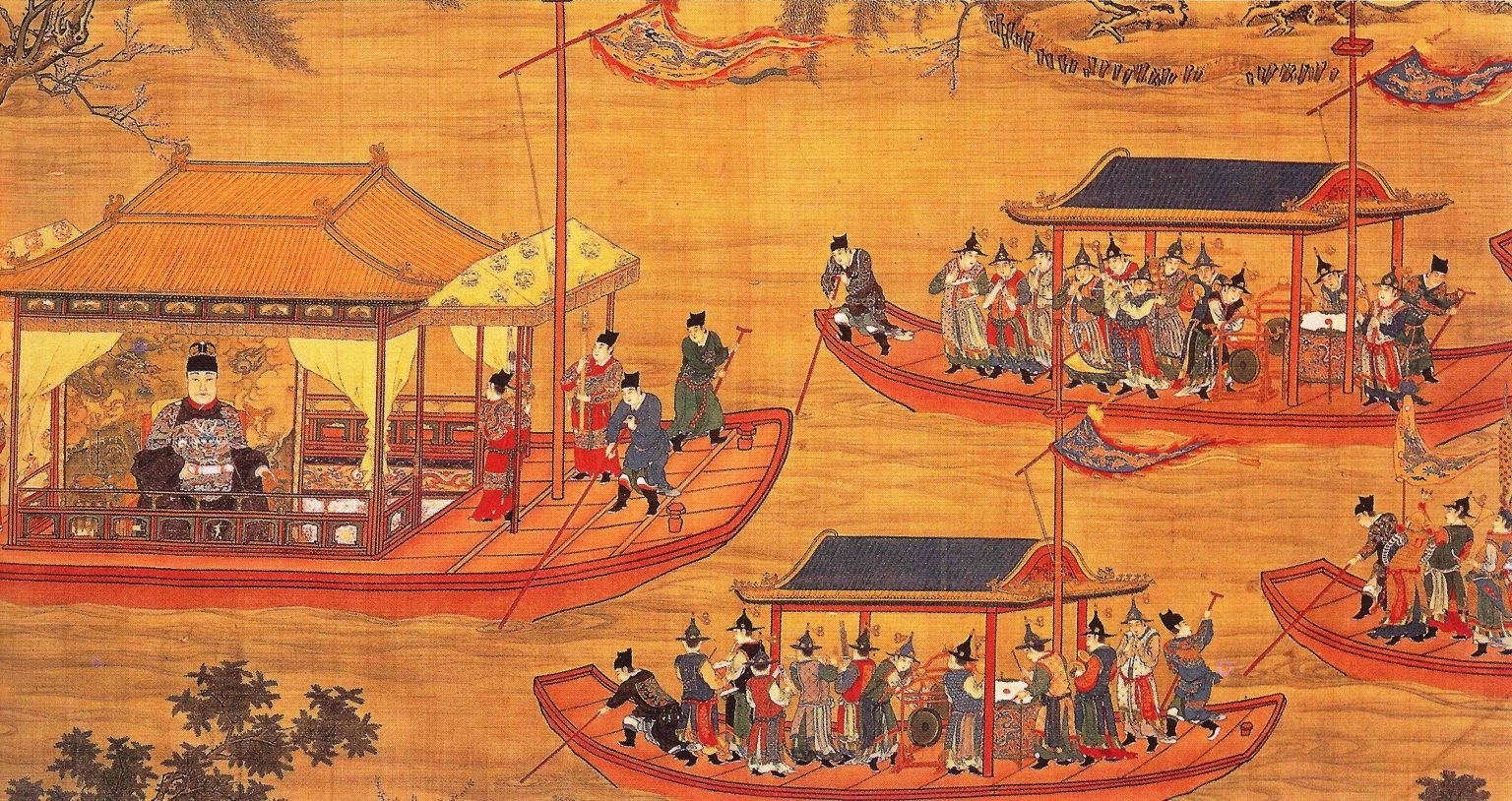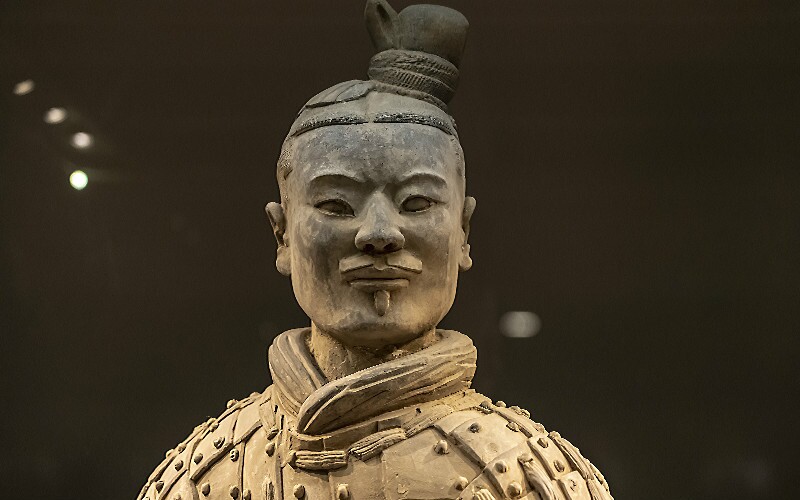
Ch'in Dynasty Map The Art of Asia History and Maps
Jin dynasty, or Chin dynasty, Period of Chinese history (ad 265-420) following the Three Kingdoms (Sanguo) and preceding the Southern Dynasties (Nanchao) periods. It is the first of two major Chinese dynastic periods to bear that name, the other Jin (or Juchen) dynasty ruling in 1115-1234. The dynasty had two distinct phases: the Western (Xi) Jin (265-317) and the Eastern (Dong) Jin (317.

Pin van Gino Refos op Chin Chin Dynasty
One of these is the Chin dynasty (1115-1234), which first overthrew the Khitan state of Liao and continued alien rule over large parts of northern China, although under a different ruling group, the Jurchen people. It is too easily forgotten that the region of modern Peking was continuously under non-Chinese rule - with all the resulting.

The Qin Dynasty (221-206 BCE) was the first dynasty of Imperial China (defined as the era of centralized, dynastic government in China between 221 BCE and 1912 CE) which united the separate states following the Warring States Period (c. 481-221 BCE), the era of near-constant warfare resulting from the decline of the Zhou Dynasty (1046-256 BCE).. It was founded by Shi Huangdi (r. 221-210 BCE.

Chinese Dynasties Overview
Subsequently the Qin (or Chin) dynasty (from whose name China is derived) was established, after its rulers had conquered rival states and created a unified empire. The Han dynasty was established in 206 bce and ruled until 220 ce. A time of turbulence followed, and Chinese reunification was achieved with the founding of the Sui dynasty in 581.

PPT Imperial China PowerPoint Presentation, free download ID6726804
The dynasty was also the pioneer of the "Mandate of Heaven" that formed the justification of the ruler's power. Qin Dynasty (221BC-206BC) The Qin Dynasty was one of the shortest dynasties in China, lasting only 14 years. It was the first dynasty of China's Imperial era. The dynasty was established by Qin Shi Huang Di as the first emperor.

chin dynasty art Royal dresses, Traditional dresses, Chinese emperor
Jin Dynasty (265 - 420) One of the least known dynasties in China was the Jin dynasty, which after the Three Kingdoms Period managed to seize the power of the Kingdom of Wei, expelling the Cao family.Later, the Jin conquered the other two kingdoms, Shu and Wu. But this reunification of China would not last long, as the peoples and tribes of the north were increasingly threatening the Jin Empire.

Lot Detail 19th C. Chinese Chin Dynasty Ancestral Portrait
Reign of Qin Shi Huang (246-221 and 220-210 BC) Qin dynasty probably started around 256 BC, although the unification of China did not occur until 221 BC. By 256 BC, the Qin had become the most powerful state in China, and in 246 BC, the kingdom fell to a thirteen year old boy, Ying Zheng. As a young man, he surrounded himself with brilliant.

Ancient China Dynasties, Emperors & Facts World History Edu
Identification. The Chin live in the mountains of the Myanmar ( Burma )- India border and in neighboring areas of Myanmar and India. "Chin" is an English version of the Burmese name for these people (cognate with a southern Chin word, 'kKxang, "a people") who call themselves Zo (or related words), meaning "marginal people."

PPT Emperor Qin (Chin) PowerPoint Presentation, free download ID2498891
The Qin dynasty (/ tʃ ɪ n /; also Chin dynasty; Chinese: 秦朝) was the first dynasty of Imperial China.Named for its origin in the state of Qin, a fief of the confederal Zhou dynasty which had endured for over five centuries—until 221 BC, when it assumed an imperial prerogative following its complete conquest of its rival states, a state of affairs that lasted until its collapse in 206 BC.

The Ch’In Dynasty (221 206 Bc.Ppt1
The "Third Chinese Empire" (中華第三帝國) consisted of the Liao dynasty, the Jin dynasty, the Yuan dynasty, the Ming dynasty, and the Qing dynasty. Accordingly, the terms "Chinese Empire" and "Empire of China" need not necessarily refer to imperial dynasties that had unified China proper.

10 Amazing Facts About the Qin Dynasty (221206 BC)
The Qin dynasty surfaced during China's Warring States period. This era spanned 250 years—475 B.C. to 221 B.C. During the Warring States period, the city-state kingdoms of ancient China's Spring and Autumn period consolidated into larger territories. The feudal states fought each other for power during this era characterized by advances.

Pin van Gino Refos op Chin Chin Dynasty
Reign. Originally called Ying Zheng, Emperor Ch'in was born in 260 B.C. and died in 210. His reign as king of the more than 500-year old state of Qin had started when he was only 13. Having unified the warring states, Chin became emperor of a unified China in 221 B.C. His rule as emperor had lasted for 12 years when he died at the age of 49.

PPT Chinese Dynasties PowerPoint Presentation, free download ID4372392
From its inauguration in c. 2070 BC to the abdication of its last emperor in 1912, China was ruled by a series of 13 successive dynasties. 1. Xia Dynasty (c. 2070-1600 BC) The Xia dynasty was the first Chinese dynasty. It was founded by the legendary Yu the Great (c. 2123-2025 BC), known for developing a flood control technique that stopped the.

Chinese Chin dynasty coins YouTube
Tsin or Chin (both: jhĬn), dynasty of China that ruled from 265 to 420, after the period of the Three Kingdoms. It was divided into two phases: the Western Tsin (265-317) and the Eastern Tsin (317-420). The dynasty was founded by the Wei general Ssu-ma Yen, who by 280 had completed the conquest of China. But after his death in 290, the empire fell apart again in the dynastic struggle.

Chin Dynasty, Chin Chin, Fair Grounds
The Qin Dynasty established the first empire in China, starting with efforts in 230 B.C., during which the Qin leaders engulfed six Zhou Dynasty states. Their reign over Imperial China existed.

Pin van Gino Refos op Chin Chin Dynasty
Mandate of Heaven. and declared himself Qin Shi Huangdi, the first Emperor of the Qin Dynasty. His reign from 220 to 210 BCE was brutal and the Qin Dynasty did not long outlive him. The next Qin Emperor, Qin Er Shi, reigned for three tumultuous years, and Ziying, who followed Qin Er Shi, held onto power for only 46 days.